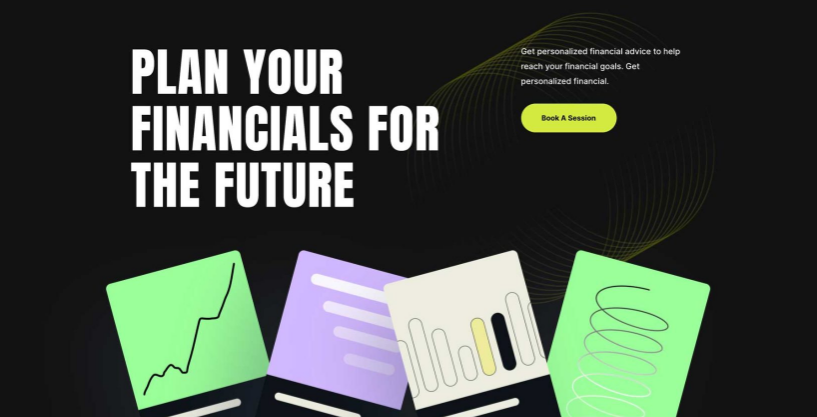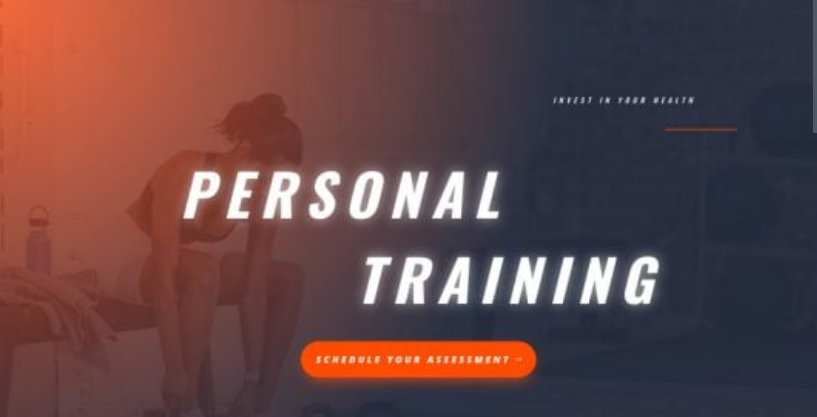Creative Web Development, Built Around You
Looking to build a modern, high-performing website? At Insentrica, we specialise in creating tailored web solutions that combine clean design, responsive functionality, and reliable performance. Whether you're launching a new site or upgrading an existing one, we work closely with you to bring your vision to life — built to scale and ready to grow with your business.
From user-friendly layouts to secure, optimised code, our web development services are crafted to deliver results you can count on. Let’s create a website that works smarter, looks sharper, and supports your long-term success.

Front End
What is Front-End Web Development?
Front-End Web Development involves everything the user interacts with directly in the browser. This includes structure, design, behavior, and content.
It’s about making websites:
- Visually appealing (Design & Layout)
- Functional (Buttons, Forms, Navigation)
- Responsive (Works on phones, tablets, desktops)
- Accessible (Usable by all, including people with disabilities)
HTML (HyperText Markup Language)
Overview
HTML is the foundation of every webpage. It defines the structure and layout of content, organizing text, images, links, and other elements in a way that browsers can display and users can understand.
Purpose
HTML doesn't make things look nice or interactive—it simply marks up the content so browsers know what each part is (a paragraph, a heading, a button, etc.).
Why It Matters
Without HTML, a webpage is just a blank screen. It's like the framework of a house—before you paint it or wire it for electricity, you need solid walls and rooms.
Key Traits
- Defines the content and hierarchy of a page
- Uses simple tags to label elements (like
<p>for paragraph) - Helps with search engine optimization and accessibility
Analogy
Think of HTML as the blueprint or skeleton of a website—it shows what goes where.
CSS (Cascading Style Sheets)
Overview
CSS controls the visual design of a website. It styles the content created with HTML, defining colors, spacing, fonts, layouts, and even animations.
Purpose
Where HTML gives the structure, CSS gives the style. It ensures websites are not just functional, but beautiful, responsive, and user-friendly.
Why It Matters
A well-designed interface encourages users to explore and trust your site. CSS also makes it easier to maintain consistency across pages.
Key Traits
- Manages design, layout, and aesthetics
- Adapts pages for different screen sizes (responsive design)
- Supports themes, animations, and visual transitions
Analogy
If HTML is the structure of a house, CSS is the interior design—the paint, furniture, and decorations that make it livable.
JavaScript (JS)
Overview
JavaScript is the language of interaction. It brings motion, behavior, and intelligence to websites by reacting to user actions—like clicks, scrolling, typing, and more.
Purpose
JavaScript powers everything from simple image sliders to complex web apps like Gmail or Google Maps. It's what makes a webpage feel alive.
Why It Matters
Modern websites need to be interactive and dynamic. JavaScript enables this without requiring the page to reload every time something changes.
Key Traits
- Handles user interactions and real-time changes
- Works with data, forms, and APIs
- Used in both front-end and back-end development (Node.js)
Analogy
If HTML is the body and CSS is the outfit, JavaScript is the brain and reflexes—making decisions and reacting to your actions.
JQuery (JQ)
Overview
jQuery is a lightweight JavaScript library designed to simplify HTML document manipulation, event handling, and AJAX interactions with less code.
Purpose
To make JavaScript easier to write and more accessible, especially for tasks involving the DOM (Document Object Model) and cross-browser compatibility.
Why It Matters
Before modern JavaScript improved, jQuery made web development faster and simpler. It was a game-changer for handling dynamic elements and AJAX with ease.
Key Traits
- Simplifies JavaScript syntax
- Easy to learn and implement
- Provides utility functions for common tasks
- Still used in legacy systems, though less in modern apps
Analogy
jQuery is like a power tool for carpenters—it does the same job as a manual tool (JavaScript) but with much less effort and time, especially for small or repetitive tasks.
Back End
What is Back-End Web Development?
Back-End Web Development involves everything that happens behind the scenes of a website or application. It’s the part users don’t see but that powers everything they do on the front end.
It’s about making websites:
- Functional (Processes user requests and logic)
- Data-driven (Stores, retrieves, and updates information)
- Secure (Protects user data and prevents unauthorized access)
- Scalable (Handles many users and large data efficiently)
Back-end developers work with servers, databases, and application logic to ensure that everything on the front end works seamlessly and reliably.
Node.js
Overview
Node.js is a JavaScript runtime built on Chrome’s V8 engine that allows JavaScript to run on the server side.
Purpose
To enable developers to build scalable and high-performance server-side applications using JavaScript.
Why It Matters
It allows full-stack development using one language (JavaScript) across both client and server, streamlining development and improving efficiency.
Key Traits
- Non-blocking, event-driven architecture
- Excellent for real-time applications (e.g., chat, streaming)
- Uses npm (Node Package Manager) for packages
- Commonly used with frameworks like Express.js
Analogy
Node.js is like a multi-tasking concierge that can quickly handle many guests at once without getting overwhelmed—efficient and responsive.
Express.js
Overview
Express.js is a minimal and flexible Node.js web application framework that simplifies building server-side applications and APIs.
Purpose
To handle HTTP requests, routes, middleware, and server-side logic with less boilerplate than raw Node.js.
Why It Matters
It provides a lightweight structure to build fast and modular server-side applications, especially RESTful APIs.
Key Traits
- Middleware-based architecture
- Simplifies routing and request handling
- Commonly paired with Node.js in the MEN stack (e.g., MERN, MEAN)
- Highly customizable
Analogy
Express.js is like the skeleton of a food truck kitchen—it gives you all the essential equipment to prepare and serve custom meals quickly and efficiently.
PHP (Hypertext Preprocessor)
Overview
PHP is a widely-used, open-source server-side scripting language especially suited for web development.
Purpose
To handle server-side scripting for dynamic content, form processing, database access, and more.
Why It Matters
It powers a huge portion of the web, including platforms like WordPress. It’s easy to integrate with HTML and databases like MySQL.
Key Traits
- Synchronous and script-based
- Embedded directly in HTML
- Large ecosystem (e.g., Laravel framework)
- Runs on most web servers (e.g., Apache)
Analogy
PHP is like a veteran handyman—not the flashiest or newest, but reliable, familiar, and knows how to get the job done.
Databases (MySQL / PostgreSQL / MongoDB)
Overview
Databases store, retrieve, and manage data for web applications. MySQL and PostgreSQL are relational (SQL-based), while MongoDB is a NoSQL document-based database.
Purpose
To store persistent data such as user accounts, posts, transactions, and other structured or unstructured data.
Why It Matters
Back-end applications rely on databases to manage data efficiently, securely, and scalably.
Key Traits
- MySQL: Simple, reliable, widely used
- PostgreSQL: Advanced features, high compliance, and performance
- MongoDB: Schema-less, flexible, ideal for unstructured data
Analogy
Databases are like filing systems in an office:
- MySQL is a well-organized cabinet
- PostgreSQL is a smart cabinet with locking systems
- MongoDB is a flexible digital notebook you can mold as needed
WordPress
What is WordPress?
WordPress is a powerful website-building tool that allows you to create, update, and manage your entire website — all without needing to know how to code.
It’s trusted by businesses, bloggers, creatives, and even major brands because it offers complete control and flexibility with none of the complexity.
- Visually appealing (Design & Layout)
- Functional (Buttons, Forms, Navigation)
- Responsive (Works on phones, tablets, desktops)
- Accessible (Usable by all, including people with disabilities)
- Data-driven (Stores, retrieves, and updates information)
- Secure (Protects user data and prevents unauthorised access)
- Scalable (Handles many users and large data efficiently)
When we build your website with WordPress, you're getting the best of both worlds: professional front-end design and powerful back-end functionality — all in one seamless system.
WordPress Front-End (What your visitors see)
This is the design, layout, and content your audience interacts with.
With WordPress, your front end is:
- Visually appealing and on-brand
- Mobile-friendly and fast-loading
- Easy to navigate for every visitor
Whether we're using a custom design or a builder like Divi, the goal is simple:
Make your website look great and work flawlessly for your audience.
WordPress Back-End (What you control)
This is where the real magic happens — behind the scenes.
Your WordPress back end gives you:
- A simple dashboard to update text, images, and pages
- Secure tools for managing forms, users, products, or bookings
- Built-in expandability to grow your site as your business evolves
You don’t have to touch code — just log in and manage your website like a pro.
How It All Works Together
Think of your website like a high-end coffee shop:
- The front end is the beautiful space your customers walk into — welcoming, easy to navigate, and designed to make a great impression.
- The back end is the kitchen, stockroom, and business systems — running quietly in the background to keep everything moving smoothly.
With WordPress, we build both sides to work together, giving you a site that’s not only beautiful but also functional, editable, and built to last.
What This Means for You
- No tech headaches — you control content without coding
- Custom design meets real business tools — form + function
- Future-ready — add a blog, shop, calendar, gallery, or more when you’re ready
Whether you’re launching your first site or upgrading an outdated one, I’ll use WordPress to bring together great design (front end) and smart functionality (back end) — so your website does what your business needs.
We use Elegant Themes (Divi)
We use Elegant Themes’ Divi, one of the most trusted and flexible design tools for WordPress, to give you total creative control with a clean, professional look.
Divi is a premium WordPress theme and visual page builder created by Elegant Themes. It transforms WordPress into a powerful, design-focused website builder with real-time front-end editing.
Demonstrations

Need a Website for Your Managed IT Services Business?
Designed and developed, fully professional, full-stack websites tailored specifically for IT service providers. From front-end design to back-end functionality, I build fast, secure, and scalable sites that showcase your expertise and turn visitors into clients.

Premium Hosting Services Need Premium Websites.
I design and develop full-stack websites tailored for premium hosting providers — combining sleek front-end design with powerful back-end systems. The result? A fast, secure, and professional online presence that builds trust and drives conversions.

Websites That Make Financial Professionals Stand Out
Complete, full-stack websites specifically for financial planners — combining clean, modern design with smart, secure functionality. Your site will reflect your professionalism, build client trust, and make it easy for prospects to take the next step.

Power Up Your Business with a Website That Works
Full-stack websites for electricians and electrical service companies that look sharp, load fast, and help you get more calls. From showcasing your services to making it easy for customers to contact you, your site will work as hard as you do — 24/7.

Look the Part. Train the Part. Now Own the Part — Online
Clean, high-impact websites for personal trainers that showcase your services, highlight client results, and make it easy for people to find you. Whether you’re training clients in person, online, or both — your website will help turn visitors into paying clients.

Where Dream Weddings Begin — With a Beautiful Website
Elegant, modern websites for wedding planners that capture your style, showcase your work, and make it easy for couples to fall in love with your services. From inspiration galleries to seamless contact forms, your site will reflect the care and creativity you bring to every celebration.
See Your Future Website in Action
Choosing the right look for your website shouldn’t be a guessing game. That’s why I’ve created live, fully interactive demos of the templates I offer — so you can explore them before making any decisions.
Whether you’re a small business, service provider, or personal brand, these designs are built to be fast, mobile-friendly, and tailored to your goals.
